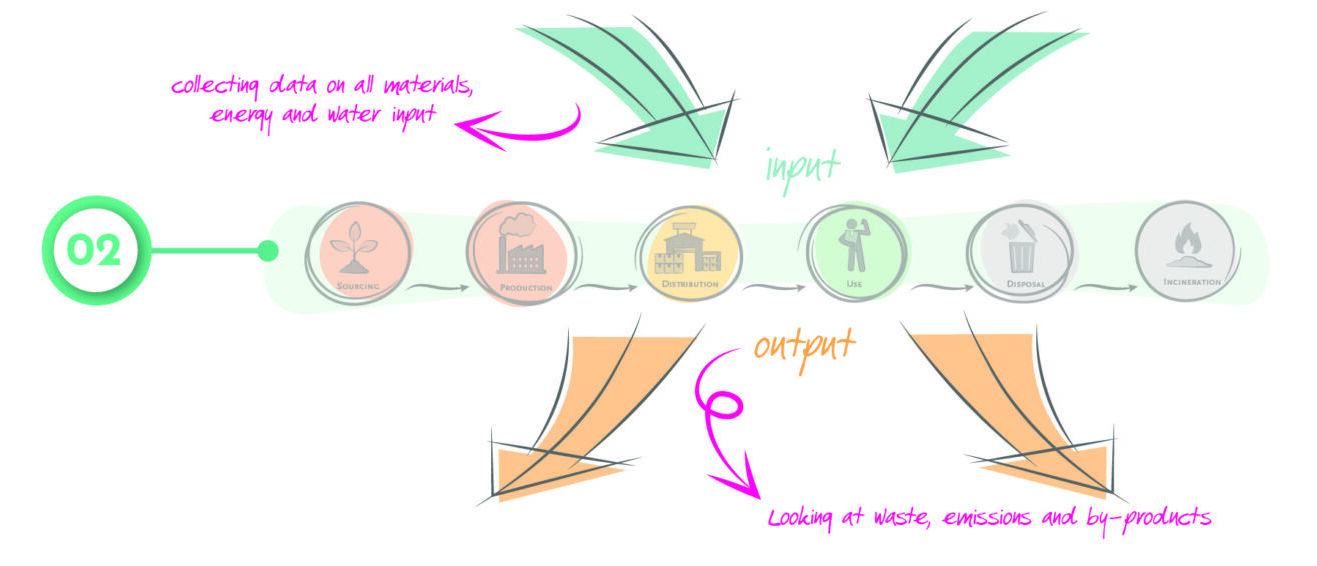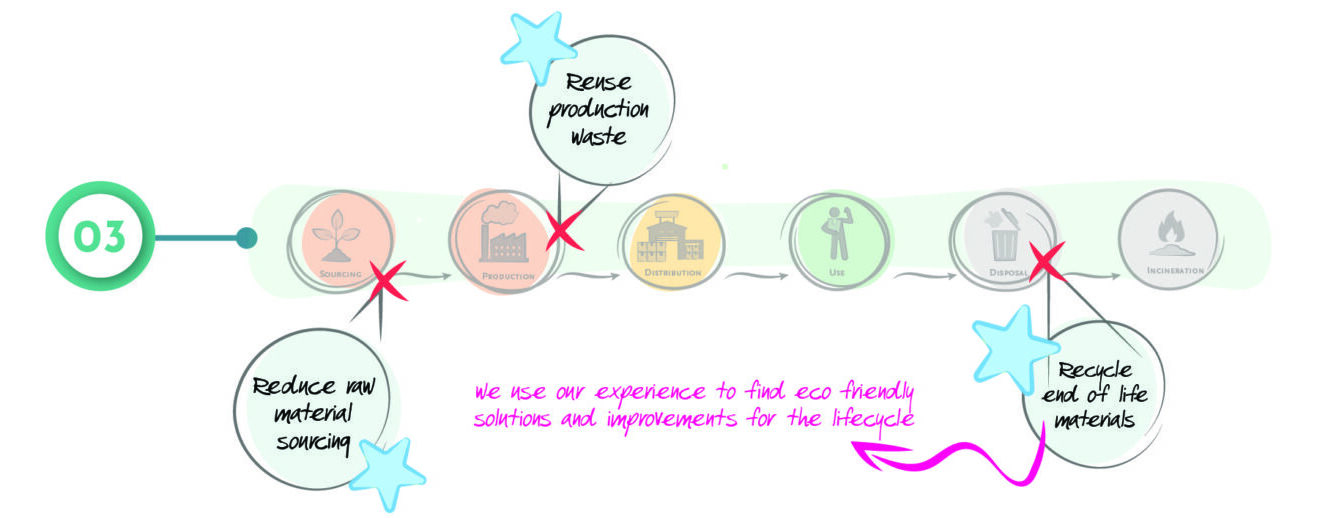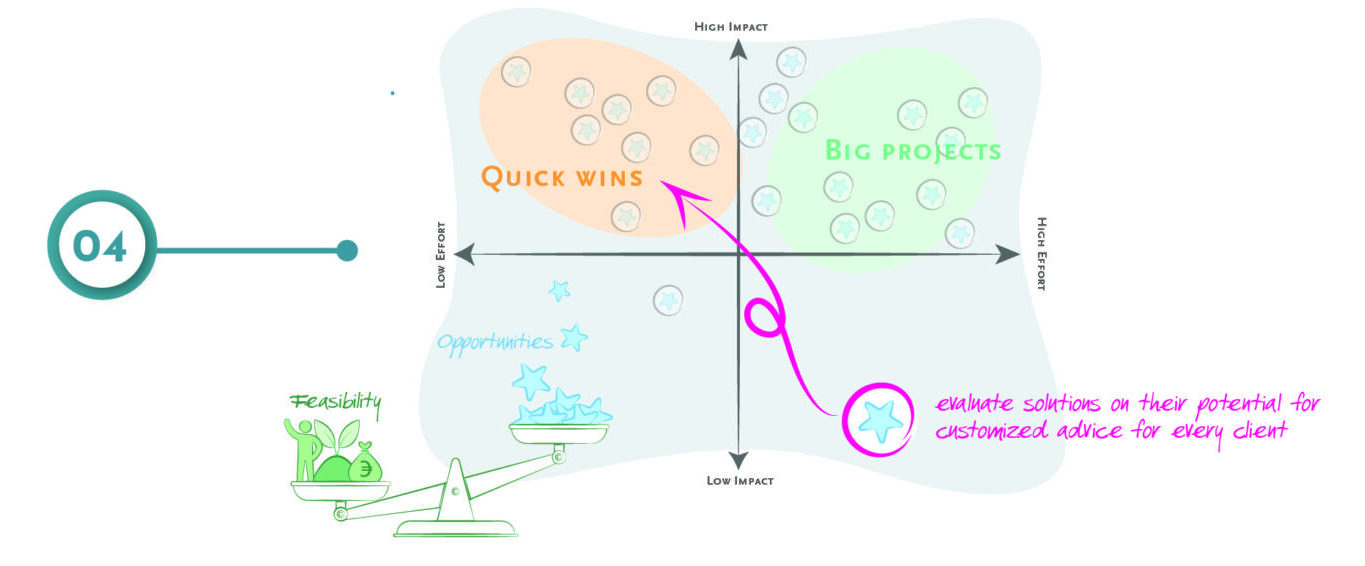WAACS provides its clients with a systematic approach to reduce their environmental impact. By redesigning products and services to reduce waste, WAACS aims to close the loop and create a more future-proof economy. Below an infographic overview of the work method is shown. Feel free to get in touch for more information.
Visualize the opportunities
By using visual communication, a comprehensible overview of the lifecycle is created to understand the current lifecycle and set a scope for the assessment.

Creating a baseline with LCA
Life Cycle Assessment (LCA) is one of the methods to measure the total impact and determines high-impact hotspots. This sets a quantitative and qualitative baseline to which improvements can be compared to.

Value lost and opportunities found
Opportunities identified are used to generate eco- solutions. Circular revenue models and eco design strategies are applied to reduce the environmental impact and create new business opportunities.

Prioritize and evaluate
Promising solutions are evaluated on their potential with three criteria: environmental improvement, cost impact and customer value. This iterative approach gets tailored to the project needs.

Incorporating eco insights
Our mission is to standardize the integration of eco insights into R&D processes, from early-stage ideation through end stages. Incorporating key eco insights can have a significant impact on the ecological footprint.

Eco- driven design: Why is it important?
The world faces a large number of environmental challenges. As the EU states “Over 80% of all product-related environmental impacts are determined during the design phase of a product”, which means designers have the opportunity and responsibility to make a positive impact.
It is important to create sustainable and regenerative products that reduce negative impacts on the environment. WAACS wants to help its clients to meet sustainability targets and incorporating sustainability metrics into their development decisions.
One example where the eco-driven design method successfully was applied, is the sustainable first aid kit for VanderPutte Medical. Read more on this case here…
How do we do it?
WAACS provides practical to comprehensive eco-design scans in order to map the lifecycle and surrounding services of a product. Through Life Cycle Analysis (LCA), sustainability insights are gathered and high-impact opportunities are identified for sustainable product- or packaging development. WAACS is committed to working closely with stakeholders and leadership to include all parties in the decision-making process to serve both the business and end-consumers best. The resulting experience and expertise, coupled with a desire to create thoughtful designs, help our clients achieve their social, environmental, and climate goals.

